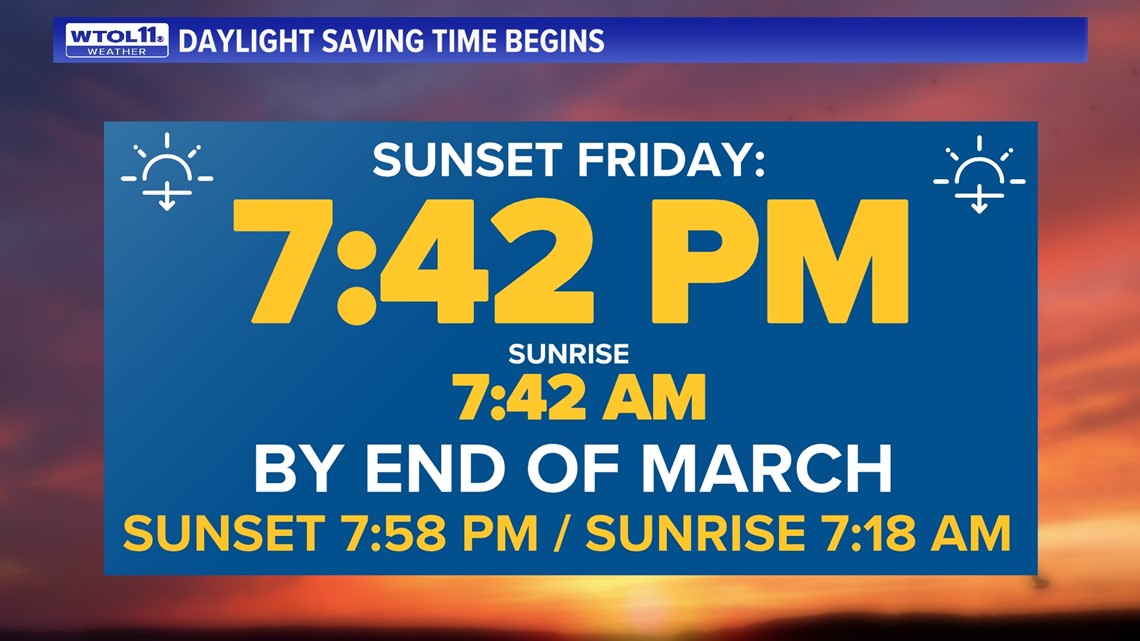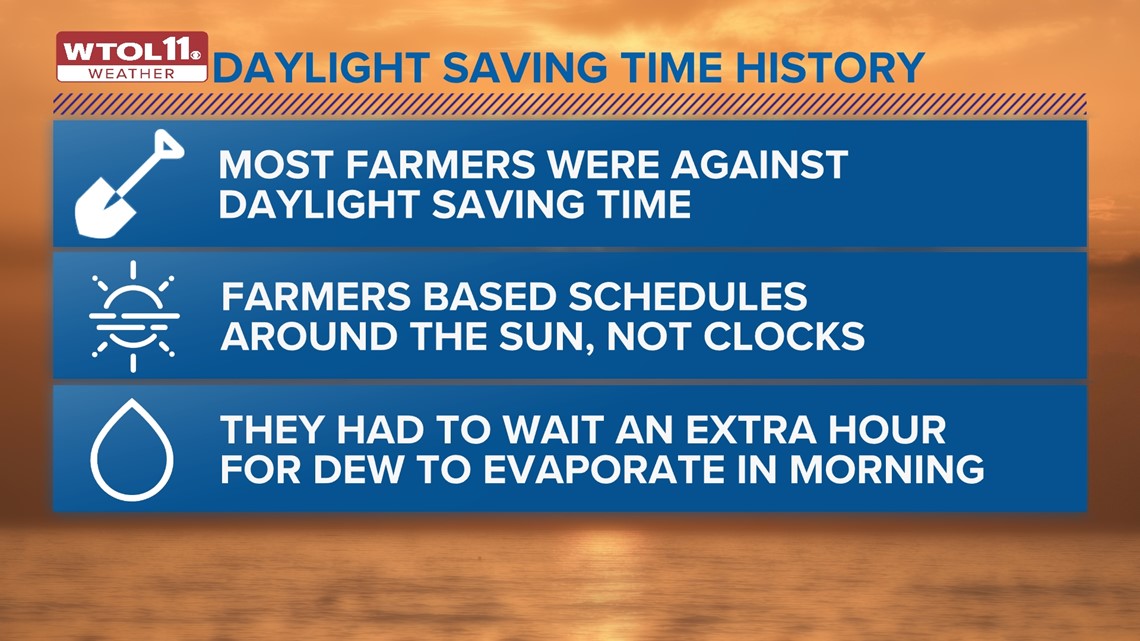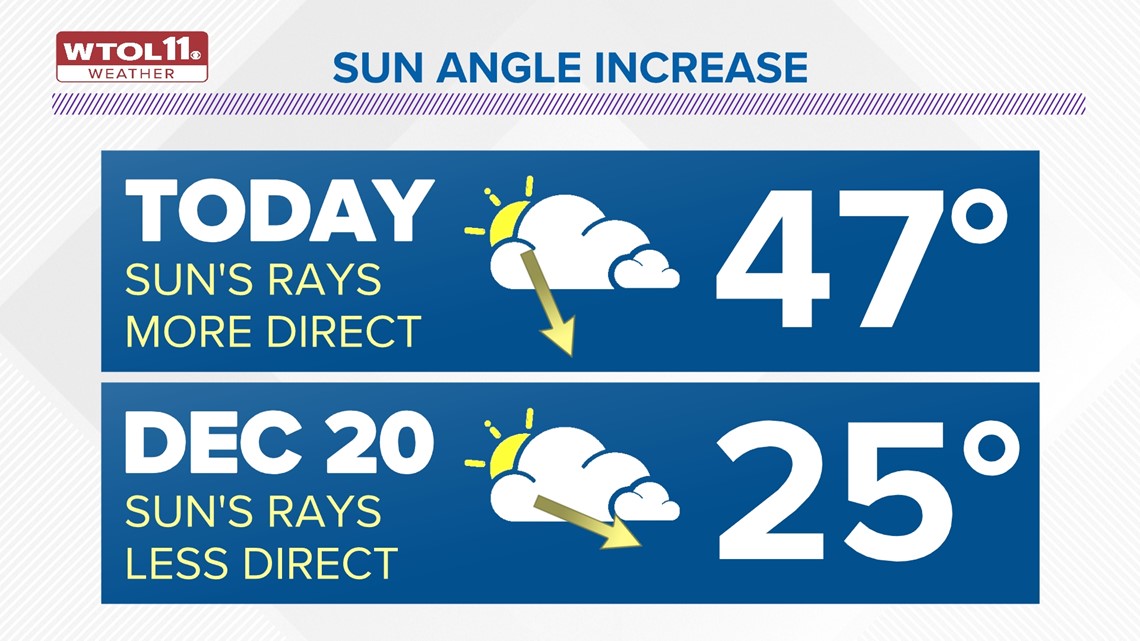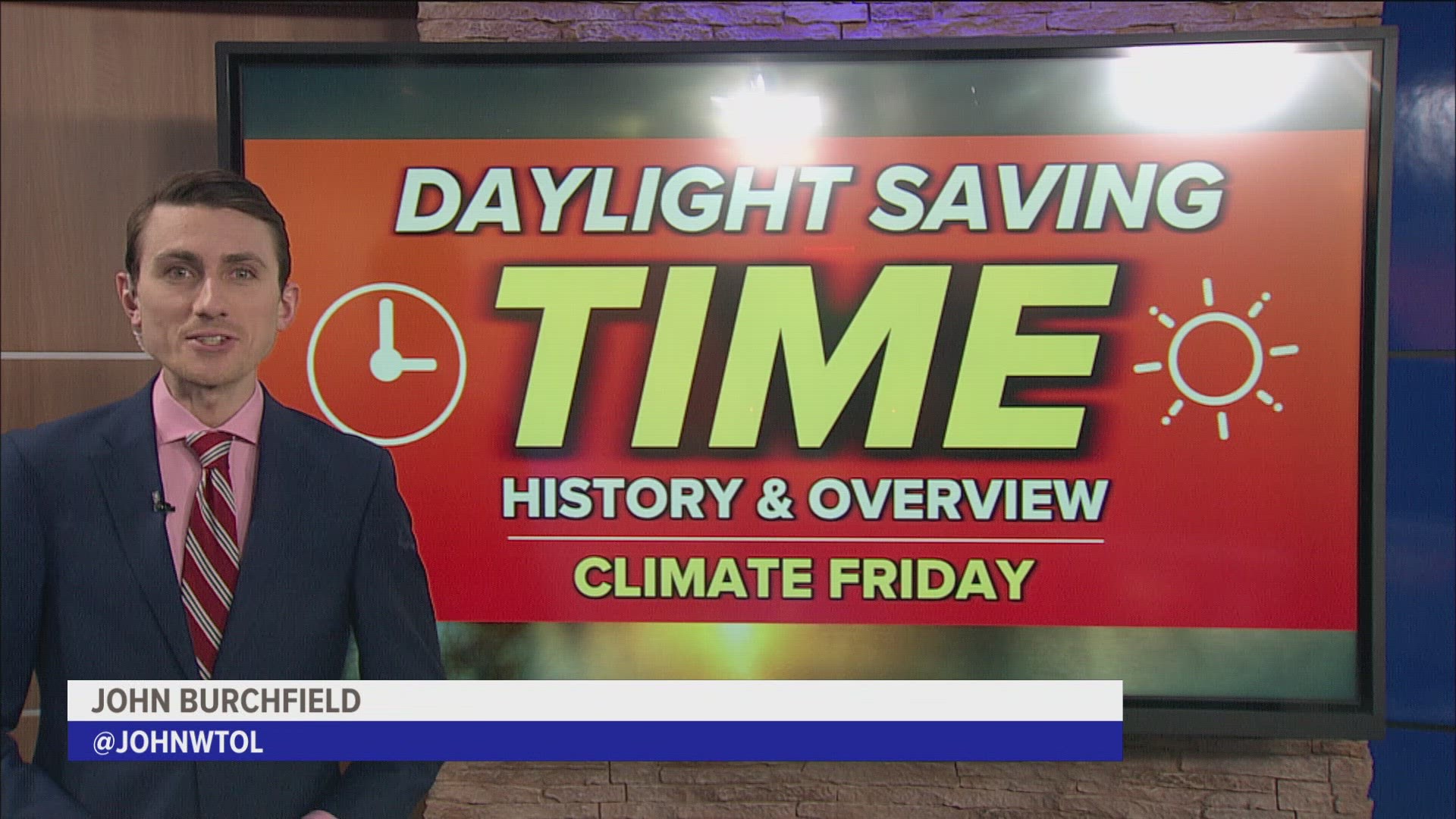TOLEDO, Ohio — Later sunsets and brighter evenings are signs of the spring season, which is now just a few days away. Daylight saving time started Sunday, kickstarting the transition into spring. But how did the time change begin and where did daylight saving time originate? WTOL 11 Meteorologist John Burchfield breaks down the history of Daylight Saving Time in this week's Climate Friday newsletter.
The concept of using natural daylight to structure work, leisure, and sleep originated thousands of years ago and shaped the development of modern civilization. In more recent American history, the idea of adapting our lifestyles to the sun originated in the 18th century.
Benjamin Franklin, erroneously described as an early proponent of a time change, studied and wrote about daylight extensively. Franklin realized the value of utilizing sunlight to optimize productivity. He proposed changing our lifestyles, not the clocks, and adopting sleep schedules that revolved around sunrise and sunset.
Franklin penned an essay on the merits of using the "economy of sunshine" and calculated that the city of Paris alone could save $200 million by capitalizing on free light from Mother Nature. This natural daylight, Franklin suggested in his mildly satirical essay, would save vast sums of money spent on oil for burning candles. In summary, Franklin did not advocate for a time change, but did open up a discussion on the value of using natural light.


Daylight saving time originated as a wartime measure during the early 20th century. In the midst of World War I in 1916, Germany adopted the first large-scale time change in an effort to conserve electricity and save resources. Reducing coal shortages and mitigating the risk of air-raid blackouts motivated the initial adoption of Daylight Saving Time during World War I.
Following suit, Great Britain quickly implemented a time change of its own just weeks later, which it called "summer time". Observing the time changes in Europe, American industries started lobbying for daylight saving time, citing the economic benefits during the war.
Though manufacturers and retailers supported the time change, many parties adamantly opposed it. Despite the controversy, daylight saving time became law in 1918 as the United States followed the lead of European nations in enacting this wartime measure.
Daylight saving time immediately spurred a whirlwind of controversy. Farmers opposed the time change, citing declines in productivity due to the shift in the clocks. Known for waking up at the crack of dawn to begin their arduous workdays, farmers lost an hour of labor due to the time change.
After the implementation of daylight saving time, farmers had to wait an extra hour each morning for dew to evaporate before harvesting hay, for example. Additionally, they opposed the artificial modulation of time, asserting that the schedules of their animals relied on the sun, not the clocks. For example, the time of day they milked their cows depended on the sun's rays, not the clock's time.


After the time change was enacted in 1918, American farmers expressed their grievances, joined by numerous other parties. In response, Congress repealed daylight saving time just a year later in 1919. Though President Woodrow Wilson, an advocate of the time change, vetoed the repeal, Congress won out, eliminating Daylight Saving Time from the books. Temporarily, the clocks returned to their normal times.
Despite the national return to regular time, individual states, cities, and municipalities implemented their own time standards, causing chaos. Over the following years and decades, time zones varied greatly based on location, impacting industry and individuals alike.
Some cities, including New York, Chicago, and Cleveland retained daylight saving time locally. Others returned to their former practices, shifting the clocks back where they were before World War I. The inconsistency in time between regions caused chaos and confusion, sparking conversations to return to universal daylight saving time.
In 1974, the time change finally became law and permanent daylight saving time was enacted. Naturally, many individuals opposed this measure, complaining about kids going to school in the dark or losing an hour of productivity on the farm, for instance. Many individuals still oppose the time change, which occurs every March and November, advocating for a universal time throughout the year.
Regardless of your opinion on daylight saving time, the time change is a sign of the spring season. Mid-March usually brings brighter and milder days, and sunset time is now after 7:40 p.m. Additionally, the sun's rays are more direct, and the increased sun angle melts away snow more quickly.


You may have noticed that the March snow this week melted quickly off the roadways, only accumulating on the grass. The increased sun angle melts snowfall more readily, minimizing accumulation and impacts. As March wraps up, sunsets will continue to grow later as the weather becomes warmer.
Regardless of how you feel about Daylight Saving Time and the changing March weather, the WTOL 11 weather team will keep you updated. Tune in next week for the latest Climate Friday Newsletter.
MORE FROM CLIMATE FRIDAY ON WTOL 11

